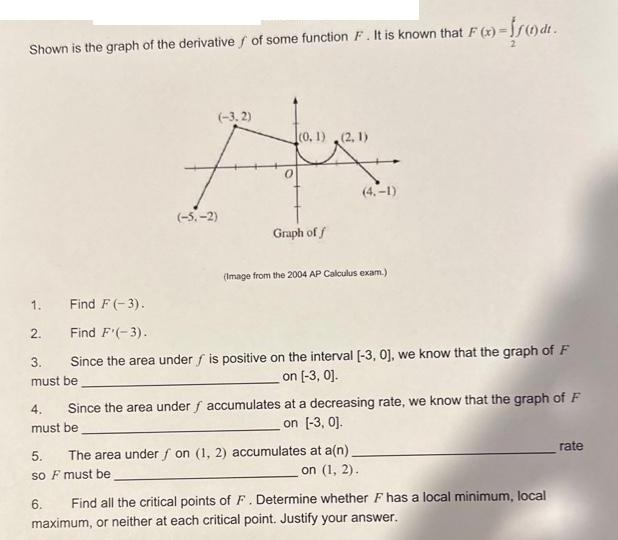Answered step by step
Verified Expert Solution
Question
1 Approved Answer
Shown is the graph of the derivative of some function F. It is known that F(x)=f(1) dt. 1. 2. (-3.2) (-5.-2) (0.1) (2, 1)

Shown is the graph of the derivative of some function F. It is known that F(x)=f(1) dt. 1. 2. (-3.2) (-5.-2) (0.1) (2, 1) 5. so F must be Graph of f Find F(-3). Find F'(-3). 3. Since the area under f is positive on the interval [-3, 0], we know that the graph of F must be on [-3, 0]. (4.-1) (Image from the 2004 AP Calculus exam.) 4. Since the area under f accumulates at a decreasing rate, we know that the graph of F must be on [-3, 0]. The area under f on (1, 2) accumulates at a(n). on (1, 2). 6. Find all the critical points of F. Determine whether F has a local minimum, local maximum, or neither at each critical point. Justify your answer. rate
Step by Step Solution
★★★★★
3.43 Rating (172 Votes )
There are 3 Steps involved in it
Step: 1
Let x Fx fltadt Now 1 FL3 fludt According to graph 2 under on the 3 The area f is positive inter...
Get Instant Access to Expert-Tailored Solutions
See step-by-step solutions with expert insights and AI powered tools for academic success
Step: 2

Step: 3

Ace Your Homework with AI
Get the answers you need in no time with our AI-driven, step-by-step assistance
Get Started


